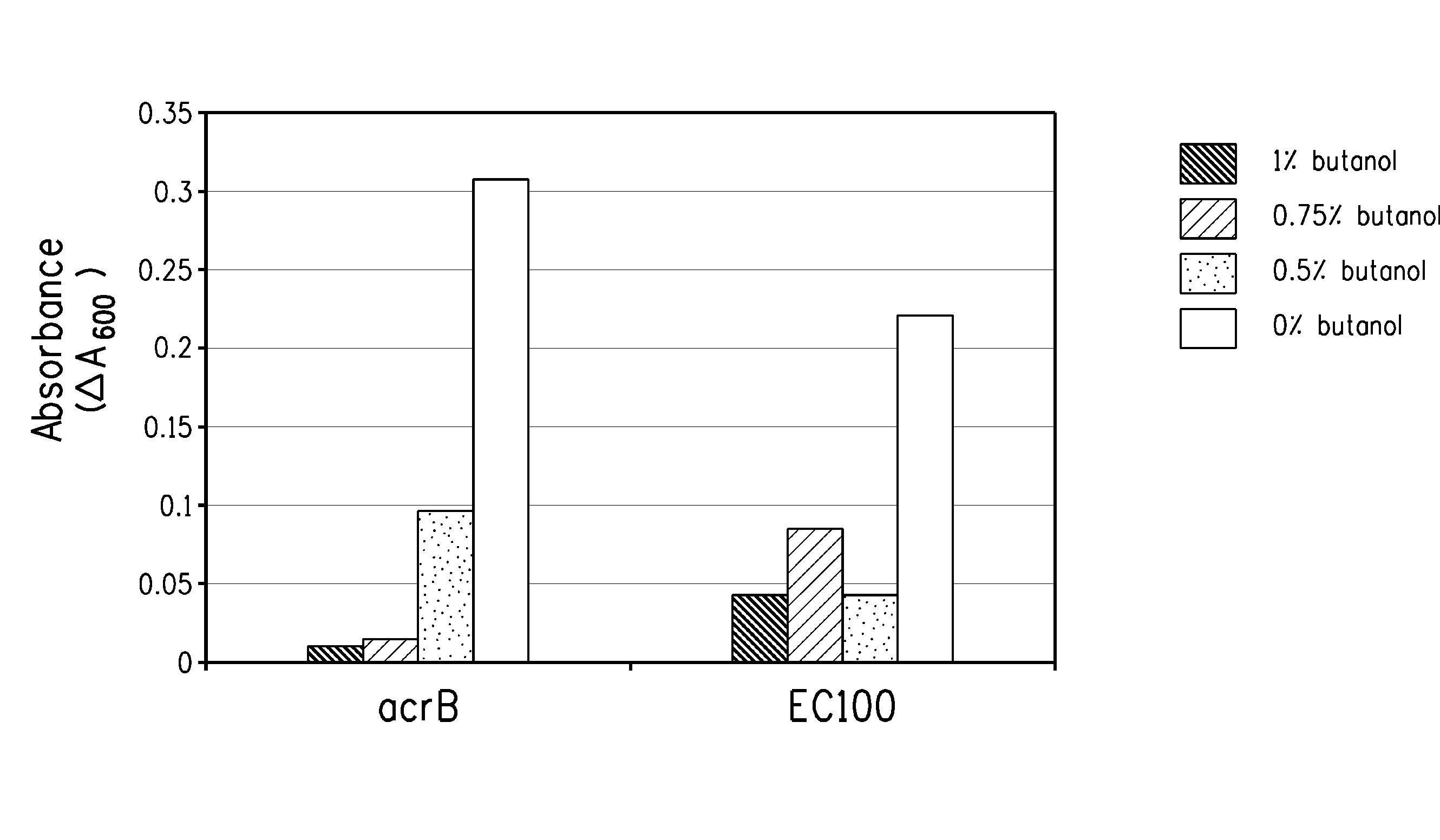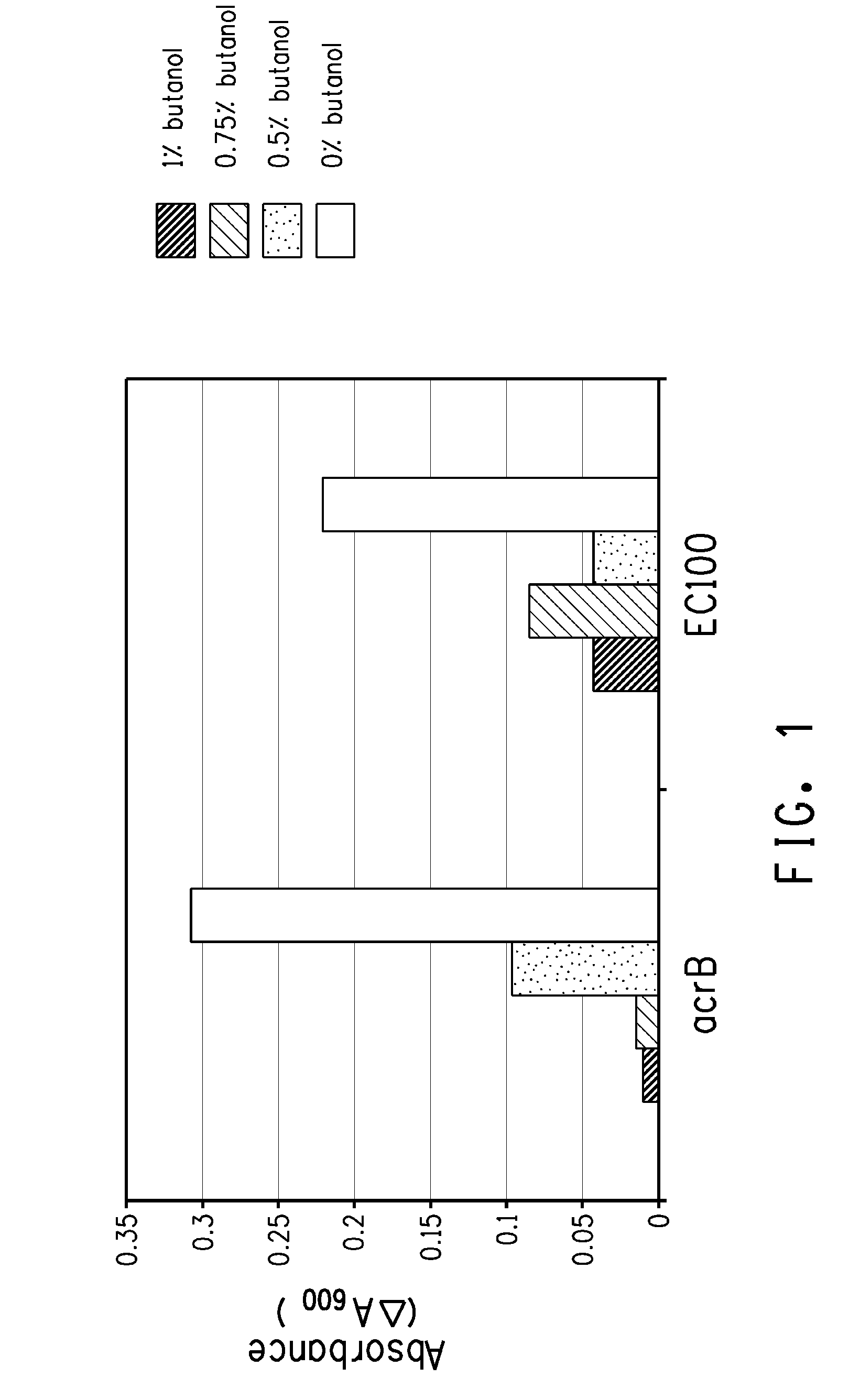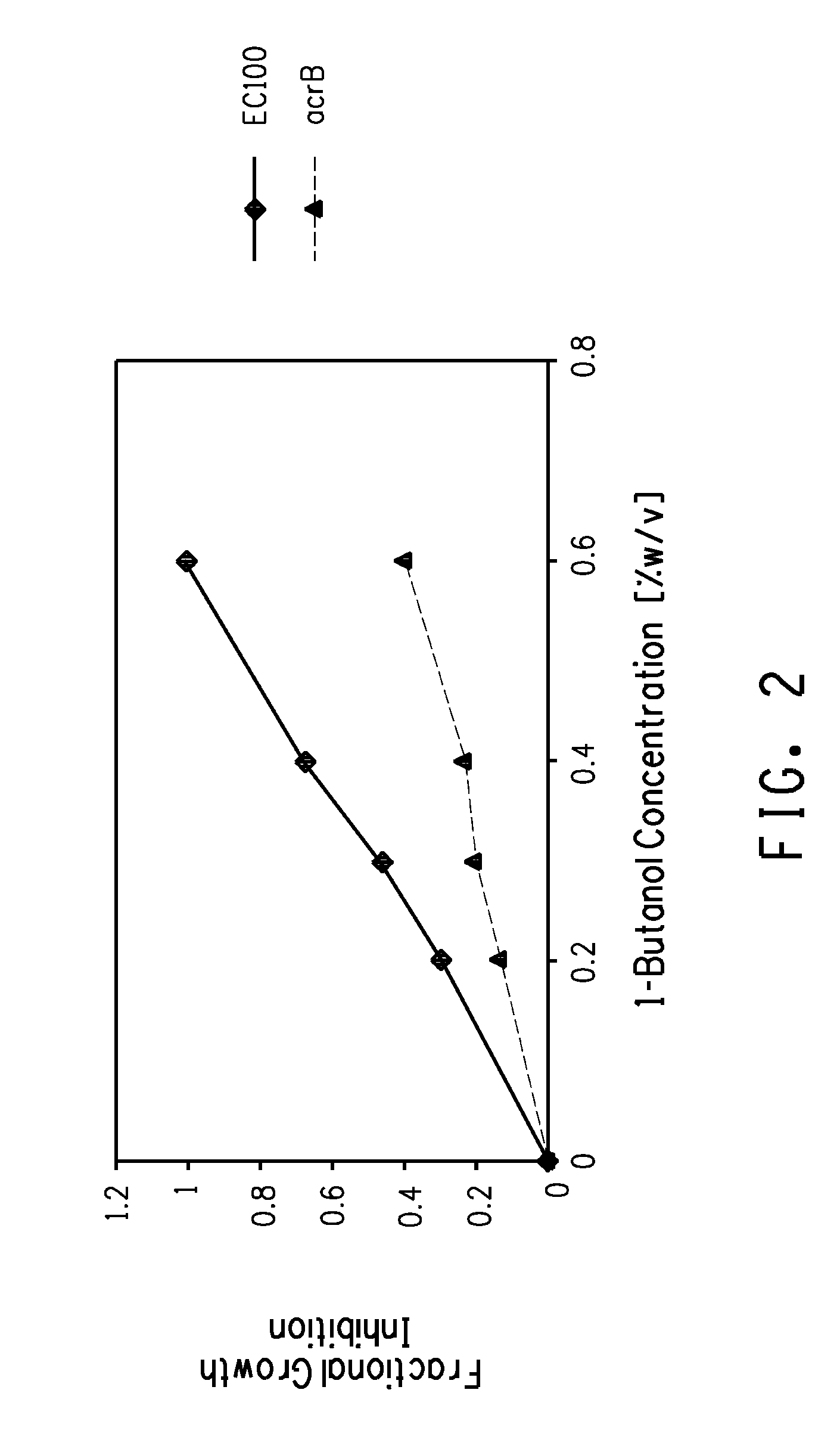Strain for butanol production
a butanol and gene technology, applied in the field of microbiology and genetic engineering, can solve the problems of limited biological production of butanols, high cost, and inability to meet the needs of petrochemical production, and achieve the effect of increasing tolerance to butanol and reducing the production of acra
- Summary
- Abstract
- Description
- Claims
- Application Information
AI Technical Summary
Benefits of technology
Problems solved by technology
Method used
Image
Examples
example 1
Generation of Knockout Library and Screening to Identify 1-Butanol Phenotypes
[0157]E. coli strain EC100 (Epicentre; Madison, Wis.], whose genotype is F-mcrA Δ (mrr-hsdRMS-mcrBC) φ80dlacM15 ΔlacX74 recA1 relA1 endA1 araD139 Δ(ara, leu)7697 galU galK λ-rpsL nupG, was transposome mutagenized. This was performed according to the vendor's (Epicentre; Madison, Wis.) protocol, using purchased electro-competent cells as the recipient in the genetic cross with the EZ-Tn5™Tnp Transposome™. 1 μl of the EZ-Tn5Tnp Transposome was electroporated into EC100 cells. Immediately after electroporation, SOC medium was added to a final volume of 1 ml and the mixture was gently agitated before transfer to a tube that was incubated at 37° C. with shaking for 1 hr. The genetic cross yielded a titer ranging from 4 to 7×104 kanamycin-resistant colony-forming units per ml of electroporated cells.
[0158]100 μl aliquots of undiluted cells and dilutions were separately plated on LB medium containing 50 μg / ml kana...
example 2
Mapping of Transposon Insertions in 1-Butanol Tolerant Strains
[0163]In order to link 1-butanol phenotypic alterations with a gene / protein / function, the transposon insertion positions were determined by sequencing. Genomic DNA was prepared from the identified 1-butanol tolerant lines using a GenomiPhi™ DNA Amplification kit (GE / Amersham Biosciences; Piscataway, N.J.) which utilizes Phi29 DNA polymerase and random hexamers to amplify the entire chromosome, following the manufacturer's protocol. A portion of a colony from a culture plate was diluted in 100 μl of water, and 1-2 μl of this sample was then added to the lysis reagent and heated for 3 minutes at 95° C. and cooled to 4° C. Next the polymerase was added and the amplification proceeded overnight at 30° C. The final step was enzyme inactivation for 10 minutes at 65° C. and cooling to 4° C.
[0164]The resulting genomic DNA was sequenced using the following primers that read outward from each end of the transposon:
Kan2cb-Fwd:CTGGTC...
example 3
1-Butanol Tolerant Mutant Phenotype in Liquid Cultures
[0168]An acrB transposition mutant strain isolated in the above examples (DPD1852) and the EC100 parental line were cultured overnight with shaking at 37° C. in LB before 1:100 dilution in fresh LB. After al hr incubation, the culture was split into 1 ml aliquots (microfuge tubes) and 1-butanol was added to 0, 0.5%, 0.75% or 1% (w / v). After a further 2 hr incubation at 37° C. with shaking, 200 μl samples were transferred to a microtiter plate and optical density at A600 recorded. The microtiter plate was moved to a platform shaker that was located within a plastic box that is in a 37° C. incubator. Optical density was subsequently recorded at 4 hour and the results are shown in FIG. 1 as the difference between the 4 and 2 hr time points.
[0169]Kinetic growth studies were performed for the acrB transposition mutant strain and the control (EC100) using the Bioscreen C Automated Microbial Growth Curve Analyis System (Oy Growth Curves...
PUM
| Property | Measurement | Unit |
|---|---|---|
| temperature | aaaaa | aaaaa |
| volume | aaaaa | aaaaa |
| column temperature | aaaaa | aaaaa |
Abstract
Description
Claims
Application Information
 Login to View More
Login to View More - R&D
- Intellectual Property
- Life Sciences
- Materials
- Tech Scout
- Unparalleled Data Quality
- Higher Quality Content
- 60% Fewer Hallucinations
Browse by: Latest US Patents, China's latest patents, Technical Efficacy Thesaurus, Application Domain, Technology Topic, Popular Technical Reports.
© 2025 PatSnap. All rights reserved.Legal|Privacy policy|Modern Slavery Act Transparency Statement|Sitemap|About US| Contact US: help@patsnap.com



